
Atsuko Yamagata is a Japanese artist currently living and working in Manila, Philippines. She is the artist behind the stunning and whimsical imagery featured inside the IKOMAI restaurant.
Atsuko’s work concept changes each time but is always based upon intuition, experimentation, and the spirit of a certain location. With each artwork, she takes us with her on a personal journey, leading towards greater appreciation for the world we live in. We especially love her emphasis on expressionism and the use of organic materials.
In this post, we sat down with Atsuko to talk about her beginnings, her style of work and what she foresees of her future.

Hi Atsuko. First of all, why did you choose to live in Manila?
Well, the decision to live here has no dramatic story behind it, ha-ha. It was simply because my husband was assigned in Manila and I wanted to be with him.
Why did you decide to become an artist?
I have always enjoyed drawing since I was a kid, and that continued on as I grew up but only as a hobby. After graduating university at the age of 22, I travelled to Spain, and experienced kind of a life-changing moment once I got there.

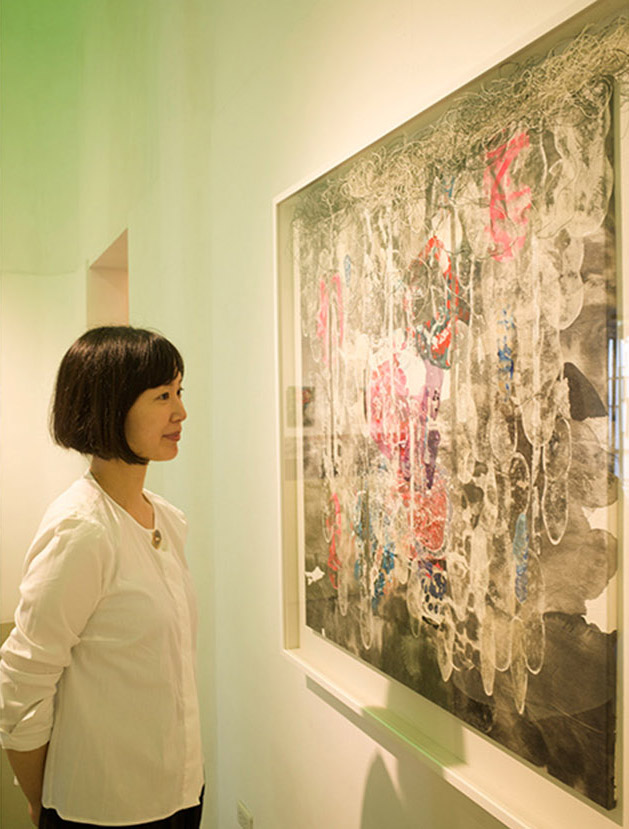

Seeing their vibrant culture and lively art scene stimulated my passion for the arts even more, and that was when I truly felt that I wanted to make art for a living.
Tell us about your path to becoming a full-fledged artist.
I wasn’t working as a full-time artist in the beginning. In fact, back then, I enjoyed my office work in Tokyo. I started pursuing creative side projects whenever my schedule allowed me. I would join group exhibitions at cafés, and at the same time did some self-studying, learning how to materialize an idea into reality. When I found out that we were moving to the Philippines, I knew I would have plenty of time to focus on my art, and that’s when I decided to pursue this full time.
What’s the difference between your early and current works?
My earlier works were influenced by Japanese illustrations. They were very expressive and I utilized a lot of vivid colors. The concept of my works then, I would say were ‘crowd friendly’, because they were easier for people to understand. But since moving to Manila, my style has gone through a dramatic change, and is now a bit more abstract.

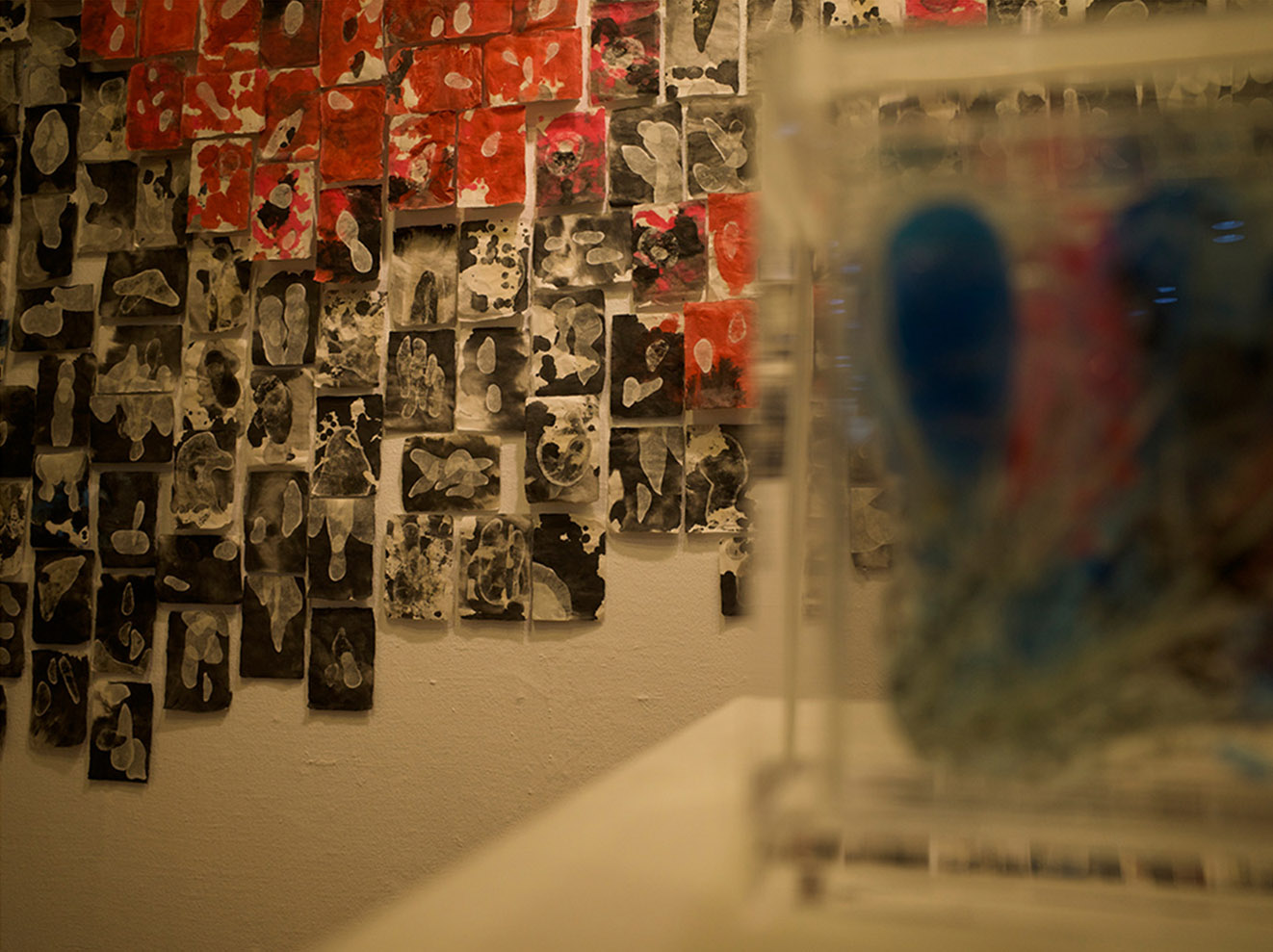
Why did your style change?
Things change as you grow old, ha-ha. Your taste, your thought processes, and your values change as time goes by. Coming to the Philippines has changed the way I live my life - in that it has allowed me to pursue what I really want to do and that has obviously reflected in my artworks.
I personally feel that the Philippines has more respect and provides more opportunities for its artists, and there is a sense of freedom when it comes to creating, as opposed to how it is in Japan. You can be more honest in your creations, and there is a place for every type of artist there is.
I believe that the Philippines offers more diversity and flexibility in terms of career and in life, and this has allowed me to open up even more, both as a person and as an artist, and that’s what I feel has caused the change in my art style.
Tell me more about where your inspiration and ideas come from.
I find inspiration in the natural world. I like working with natural materials, like paper. I love the organic expressions, textures, and forms I am able to produce with it. I particularly love to use this organic handmade paper made by a wonderful Japanese paper craftsman who lives in the mountain of Poking.

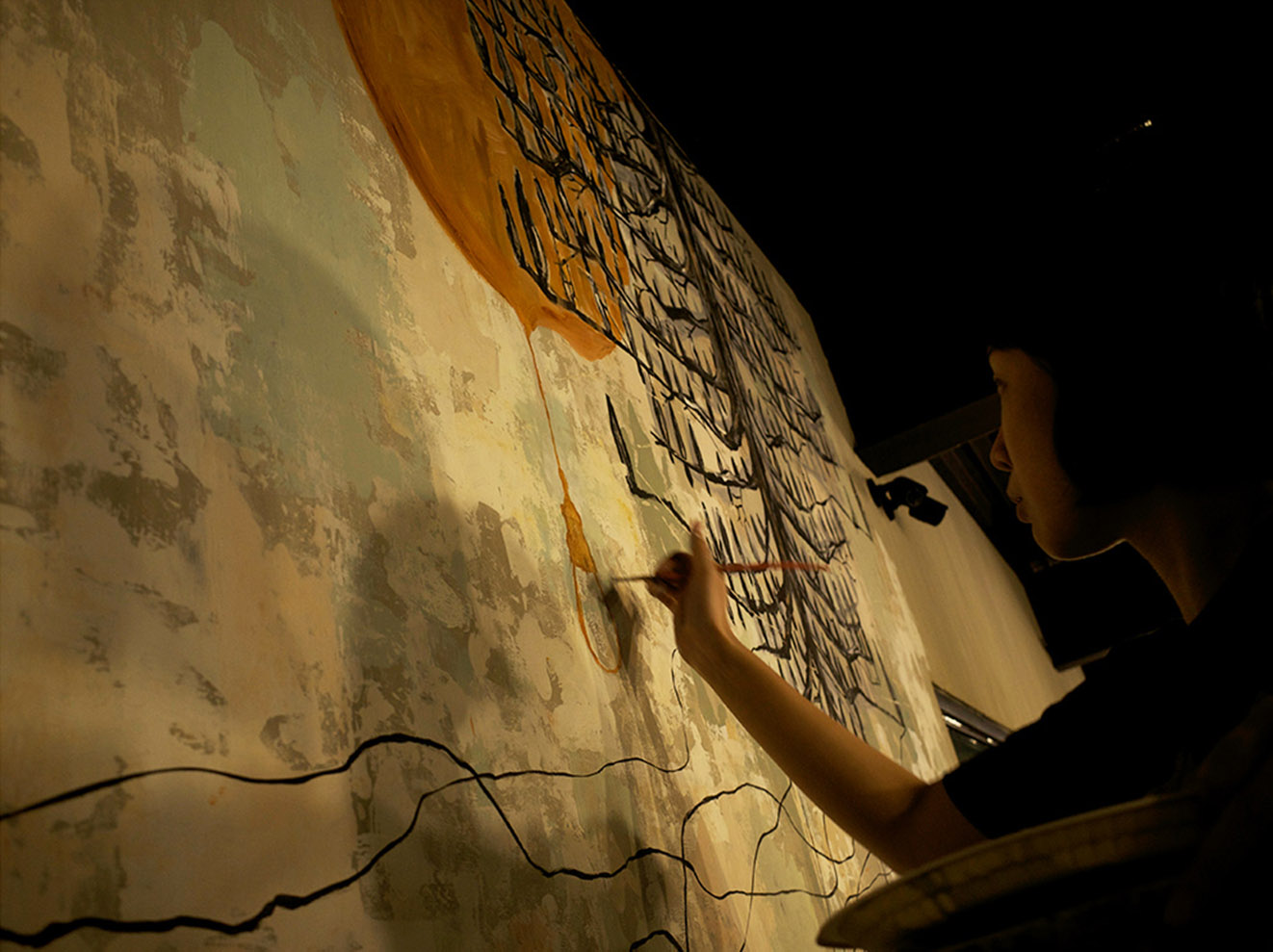
Aleatoricism is also an important method in my art process. It might sound lofty, but really it’s simply about harnessing the essence of the materials I work with and incorporating spontaneity and randomness into my artwork.
Do you also take inspiration from your home town, Hokkaido? (The Northern Islands are well-known for their beautiful wild nature.)
Definitely. My hometown is part of my inspiration and foundation. My choice of materials and colors are the first hint of this influence in my artworks.
I’m the type of artist who likes to self-examine when trying to come up with a new theme. I look to my roots and my identity, and they do have a profound impact during concept creation. In the end, you’ll find that my passions, my inclination towards natural art and organic paper are all interconnected, and all ties back to my background.
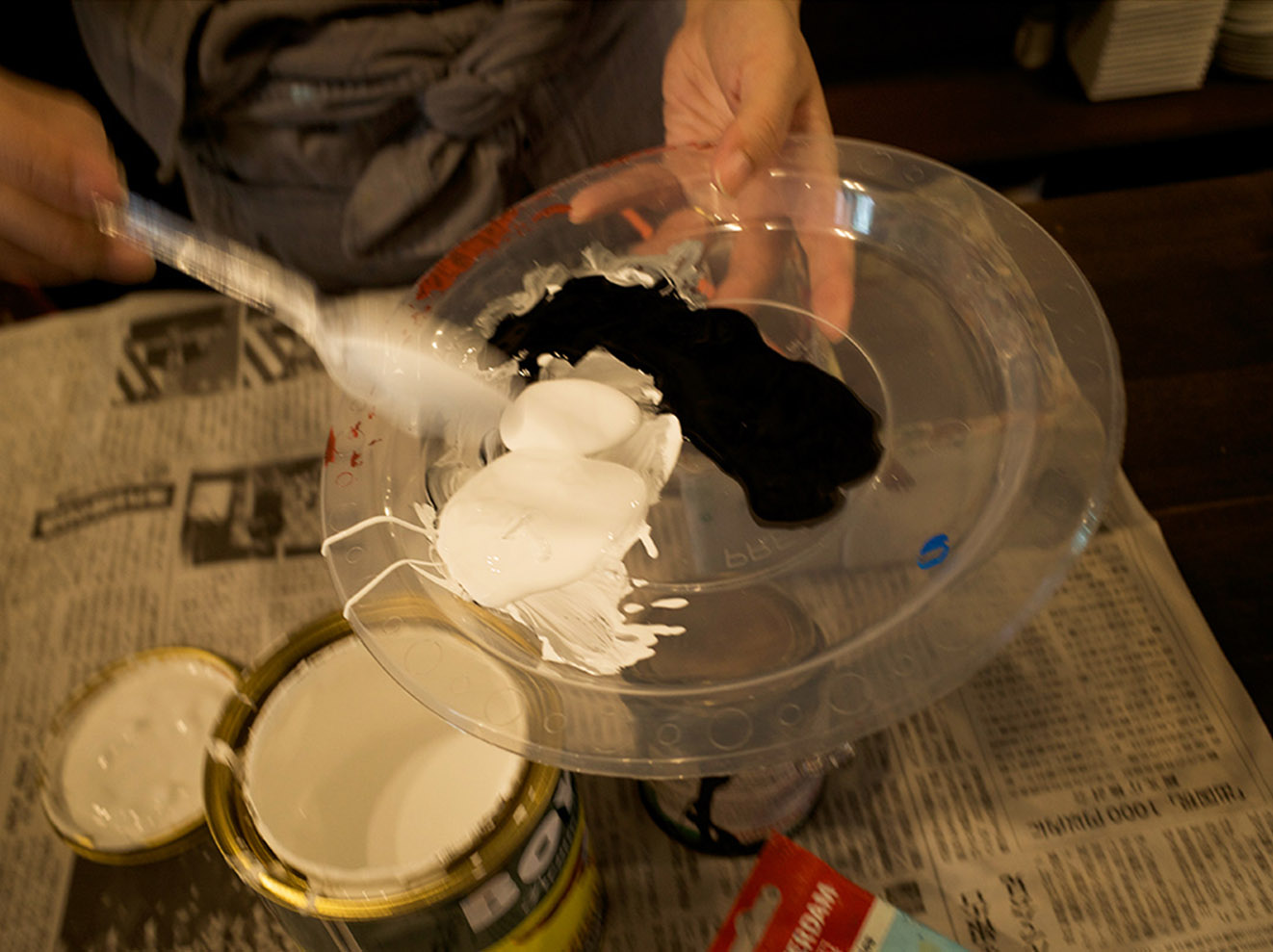

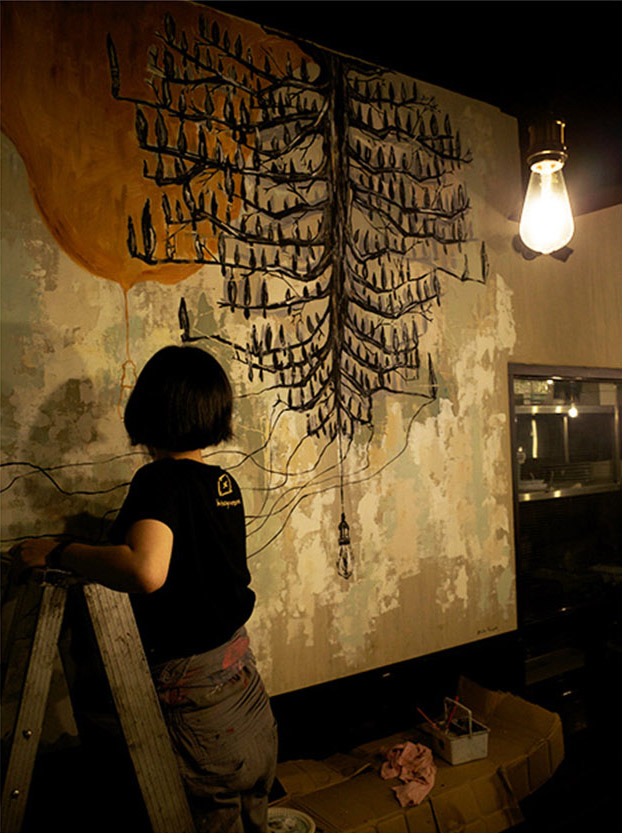
Can you tell us more about the wall mural at IKOMAI?
So when I learned that “Home” was the concept for IKOMAI, ‘trees’ were the first that came to mind. I wanted it to become a focal point but at the same time mesh with IKOMAI’s interior and vibe. I decided on a mistletoe tree with light coming through its branches and leaves.
Although the mural was going to be an IKOMAI’s statement wall, I wanted it to be a reflection of me too. So, I added small suggestions here and there of my own characteristics. The winding lines are a good example. It represents my way of connecting with people. It really is me. And then for the background I used a roller to produce an interesting, rigged texture. I let the roller lead me through each layer, and I’d like to think that represents my approach to life. I prefer to lead a more flexible and spontaneous way of life, rather than a life that feels more decided and structured.
What is your impression of IKOMAI?
I like the way IKOMAI was built. It is sophisticated and tranquil, yet you can still sense a hint of playfulness. It’s easy to feel comfortable here. It doesn’t look like the usual Japanese restaurant, but that’s what makes for a good surprise, and that what I think makes IKOMAI unique too.
What are your plans for the future?
I really love being in the Philippines. I love the energy, the happy people, and the all-around nice weather. I can see myself being based here for years to come and expanding my artistic reach from here to other parts of the world.
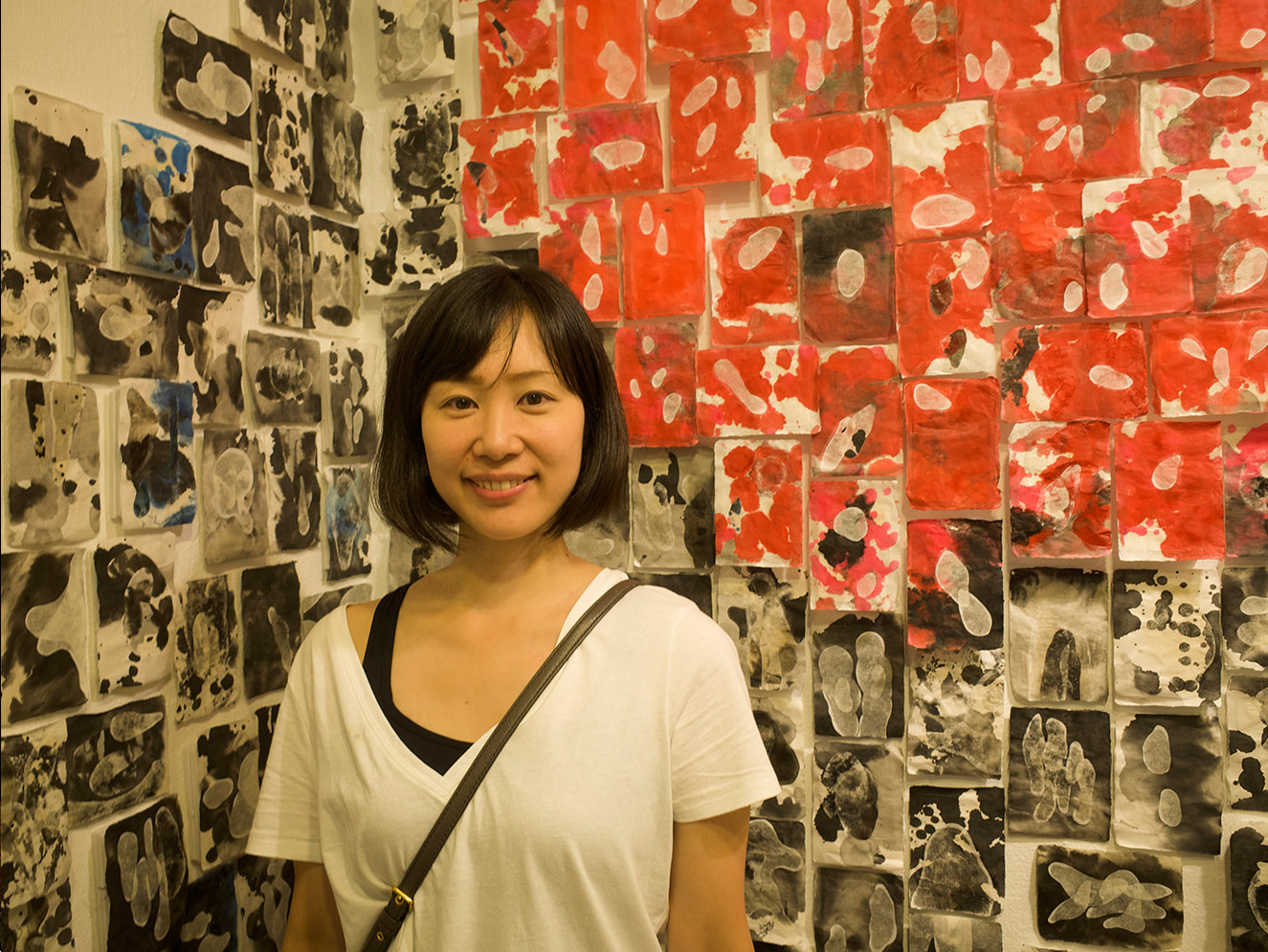
Many thanks, Atsuko, for sharing your time so generously. Find more from Atsuko Yamagata on her website.
Interview and Text: Nikki Vias
Photography: Taro Hori
ARCHIVES


